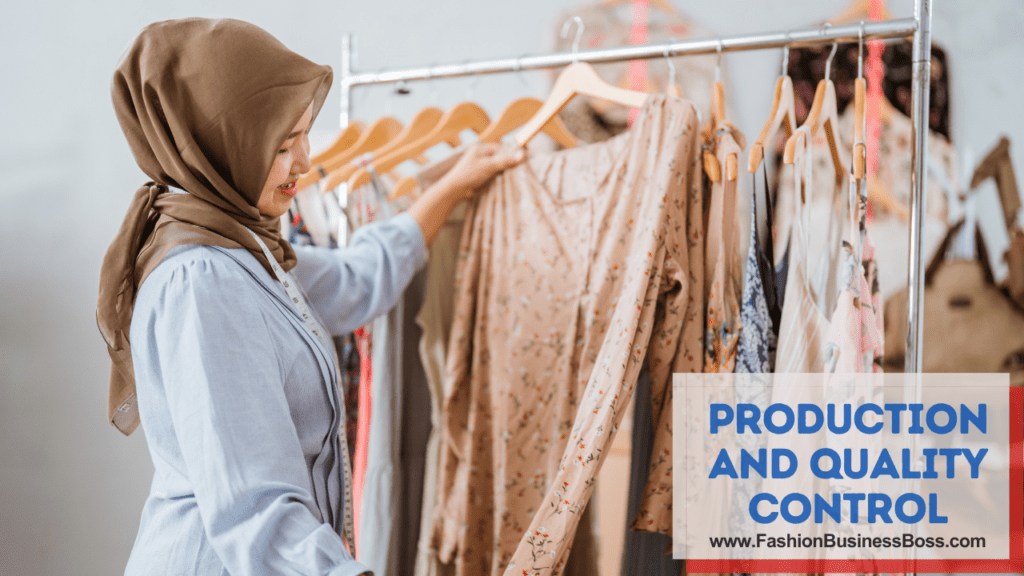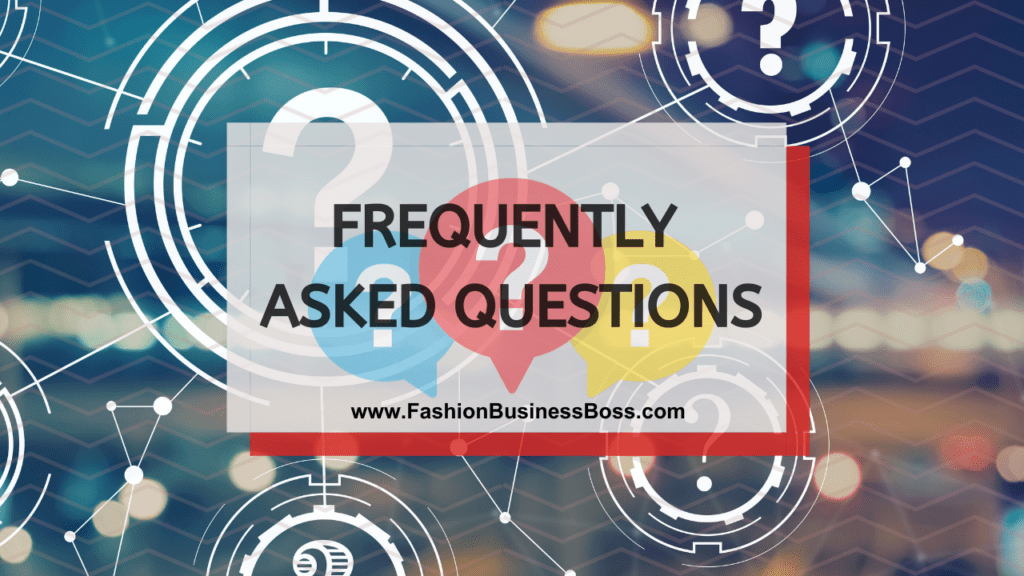Are you passionate about fashion and dreaming of launching your clothing brand? Starting a clothing brand can be an exciting venture, but it also requires careful planning and execution.
To launch your clothing brand: define your identity, research the market, craft a solid plan, handle legalities, design your line, source materials, ensure quality, establish branding, go online, and market effectively.
In this article, we’ll walk you through the essential steps to turn your fashion dream into a reality.
Define Your Brand Identity

Defining your brand identity is a foundational step when starting a clothing brand. It involves answering essential questions that shape your brand’s character and direction.
Firstly, think about the unique style or look of your clothing. What makes it different from others? This distinctiveness forms the core of your brand identity.
Next, identify your target audience. Who are the people you want to wear your clothes? Knowing your audience helps tailor your designs and marketing efforts to their preferences and needs.
Consider the values or messages your brand wants to convey. Are you eco-friendly, ethically conscious, or trendsetting? These values set the tone for your brand and resonate with your customers.
By understanding your brand identity, you create a solid foundation. It guides your design choices, ensuring they align with your brand’s essence. It also shapes your marketing strategies, allowing you to connect with your target audience effectively. Overall, defining your brand identity is a crucial step that sets the direction for your clothing brand’s journey.
Read more about: Dressing Up Your Brand: Steps to Get Your Own Clothing Label
Market Research and Target Audience
Comprehensive market research serves as the foundation for any clothing brand. It involves a detailed exploration of various aspects to better understand the market landscape and your potential customers.
Begin by examining your competitors. Study their products, pricing, and marketing strategies. This helps you identify what works and what doesn’t in the industry.
Stay updated on current fashion trends. Analyze what styles, colors, and designs are gaining popularity. This insight guides your own design choices to stay relevant.
Identify gaps in the market where your brand can make a unique contribution. Perhaps there’s an underserved niche or an emerging trend that you can tap into.
Understanding your target audience is paramount. Determine the demographics, such as age and gender, of your potential customers. Delve into their lifestyles and preferences to create clothing that resonates with them.
Create a Business Plan
Crafting a well-structured business plan is a vital step when embarking on your clothing brand journey. This plan serves multiple crucial purposes.
Firstly, it clarifies fundamental aspects such as your business’s name and its legal structure, like whether it’s an LLC or a sole proprietorship. These decisions determine how your business operates within the legal framework.
Mission and vision statements are the guiding principles that define your brand’s purpose and long-term aspirations. They provide a clear sense of direction for your clothing brand.
Detailed financial projections are essential for securing funding and managing your finances effectively. These projections outline your expected income, expenses, and profits over a specific period.
Your marketing and sales strategies detail how you intend to reach your target audience and sell your clothing. These strategies are vital for promoting your brand effectively.
Production and supply chain plans ensure a smooth flow of your clothing from design to delivery. They cover aspects like sourcing materials, manufacturing, and distribution.
Legal and Financial Matters

Addressing legal and financial matters is a fundamental step in establishing your clothing brand as a legitimate and organized entity. Here are the key aspects to consider:
Firstly, registering your clothing brand as a legal entity is crucial. This step grants your brand legal recognition and protection. You’ll need to choose an appropriate legal structure, such as an LLC or sole proprietorship, depending on your business needs.
Ensure that you obtain any necessary licenses or permits to operate your clothing brand legally. Requirements may vary depending on your location and the nature of your business.
Opening a dedicated business bank account separates your personal finances from your brand’s finances. It simplifies financial management, making it easier to track income and expenses.
Establishing a clear accounting system is essential for maintaining financial transparency. Record all expenses and revenue meticulously. This system ensures that you can monitor your brand’s financial health and comply with tax obligations.
Read more about: E-Commerce Essentials: Launching Your Clothing Business Online
Design Your Clothing Line
Designing your clothing line is the stage where your creativity takes center stage. It’s where you give life to your ideas and create the clothing that will represent your brand. Here’s how to go about it:
Begin by sketching your designs or collaborating with a designer. This is where you put your concepts onto paper, outlining the shapes, styles, and overall look of your clothing.
Consider essential factors like fabric choices, colors, and sizing. The materials you select will impact the comfort and appearance of your garments. Colors play a vital role in conveying your brand’s identity, so choose them thoughtfully. Sizing ensures that your clothing fits a wide range of customers, so it’s crucial to get it right.
To ensure your designs meet your quality standards, create prototypes or samples. These are initial versions of your clothing items. Testing them helps you identify any issues and make necessary improvements before mass production.
Source Materials and Suppliers
Sourcing materials and suppliers is a critical step in making your clothing brand a reality. It involves finding the right partners to provide the materials you need for production. Here’s how to go about it:
First, seek out reliable suppliers for fabrics, trims, and other materials required for your clothing line. These materials are the building blocks of your designs, so quality is paramount. Research and choose suppliers known for their reliability and the quality of their materials.
Establishing relationships with manufacturers or production partners is the next step. These partners will bring your designs to life through production. Look for partners who have the capacity to meet your production needs and can deliver on time.
Ensure that your chosen suppliers and partners align with your brand’s quality and ethical standards. This means verifying their production practices and ensuring they meet any ethical and sustainability criteria your brand upholds.
Production and Quality Control

Maintaining rigorous production and quality control is essential to ensure your clothing brand meets the highest standards and builds trust with your customers. Throughout the production process, it’s crucial to implement strict quality control measures. This entails continuous monitoring and assessment of materials, workmanship, and finished products to ensure they align with your brand’s quality standards.
Regularly inspecting samples and prototypes is a key practice in this regard. These early assessments help identify and address any issues or defects promptly, preventing them from affecting the entire production. Quality assurance should be an ongoing commitment, with consistent monitoring and maintenance of quality at every stage, from material selection to the final product.
By upholding stringent production and quality control measures, you not only ensure that your clothing aligns with your brand’s standards but also establish a reputation for reliability and excellence in the eyes of your customers. Quality assurance is integral to delivering products that meet customer expectations and maintaining the integrity of your clothing brand.
Read more about: E-Commerce Essentials: What Does It Cost to Make a Clothing Website?
Branding and Logo
Developing a strong brand identity is crucial when establishing your clothing brand. This involves defining the unique values, style, and message that your brand represents. Equally important is crafting a memorable logo that visually embodies your brand’s essence. The logo should be visually appealing, easy to recognize, and memorable, favoring simplicity for better recall.
Consistency is key in branding. To build brand recognition, maintain uniformity in applying your brand identity and logo across all touchpoints, including your website, social media profiles, marketing materials, and product packaging. This consistency not only reinforces your brand but also fosters trust and familiarity with your target audience.
Branding and logo design are integral components of your clothing brand’s identity. Branding defines your brand’s values and style, while a well-designed logo visually represents your identity. Consistency in their application across all aspects of your brand aids recognition and trust-building among your audience.
Set Up an Online Presence
In today’s digital age, establishing an online presence is a fundamental requirement for your clothing brand’s growth. Begin by creating a professional website that acts as a digital storefront, allowing you to display your clothing line comprehensively. Your website should offer a detailed insight into your brand, encompassing its distinctive style, core values, and range of products. It’s imperative to ensure that the website is user-friendly, featuring intuitive navigation and an aesthetically pleasing design that aligns seamlessly with your brand’s identity.
Consider the use of e-commerce platforms such as Shopify, WooCommerce, or Etsy to streamline online sales. These platforms simplify the process of listing your products, managing inventory, and handling transactions, providing a convenient shopping experience for your customers.
Harness the power of social media platforms like Instagram, Facebook, and Twitter to establish connections with your target audience and promote your brand effectively. These platforms offer valuable avenues for sharing engaging content, showcasing your clothing, and engaging with potential customers to foster brand loyalty and growth.
Marketing and Promotion

Creating a robust marketing and promotion strategy is essential to bring your clothing brand to the attention of your target audience. To begin, it’s crucial to develop a comprehensive marketing plan that outlines how you intend to reach potential customers. Tailor this plan to reflect your brand’s unique identity, objectives, and the most effective channels for connecting with your intended audience.
Harness the power of social media marketing by establishing a presence on platforms like Instagram, Facebook, and Twitter. Regularly share visually appealing content, engage with your followers, and consistently showcase your clothing line to maintain a strong online presence.
Consider forming partnerships with influencers in the fashion industry who resonate with your brand’s values and style. Collaborating with influencers can expand your brand’s reach and lend credibility to your offerings.
Implement email marketing campaigns to keep your audience informed about new collections, promotions, and updates. Building an email subscriber list is a valuable asset for staying connected with potential customers.
Invest in optimizing your website for search engines (SEO) to enhance its visibility in search results. This ensures that your brand is easily discoverable when potential customers search for relevant keywords.
Lastly, create anticipation and interest around your brand by launching pre-launch teasers and campaigns. These initiatives generate excitement before your clothing line’s official debut. By strategically combining these marketing and promotion techniques, you can effectively introduce your clothing brand to your target audience and start building awareness and engagement.
Read more about: Elegance in Pixels: Design Your Clothing Website
Launch Your Brand
After months of dedicated effort, the moment arrives to officially introduce your clothing brand to the world. The key step here is the brand launch, a significant milestone in your brand’s journey. You have the option to host this event either online or in-person, depending on your preferences and circumstances.
Consider organizing a launch event that serves as a platform to showcase your debut collection. Invite influencers and fashion enthusiasts who align with your brand’s identity and style to participate. Their involvement can generate a buzz around your clothing line, attracting attention and fostering interest among a wider audience.
An online launch event may involve unveiling your collection through a live stream or virtual presentation, reaching a global audience. Conversely, an in-person event provides a more tangible experience, allowing attendees to engage with your clothing physically.
Frequently Asked Questions

Q: How can one ensure the quality of a clothing line during production?
A: Ensuring the quality of a clothing line involves maintaining strict quality control throughout the production process. Manufacturers should inspect samples and prototypes thoroughly and adhere to the quality standards set by the brand.
Q: What are the key components of a well-structured business plan for a clothing brand?
A: A comprehensive business plan for a clothing brand should include essential elements like the business name and legal structure, mission and vision statements, detailed financial projections, marketing and sales strategies, and production and supply chain plans.
Q: How can a clothing brand be effectively marketed to reach the target audience?
A: Effective marketing strategies for a clothing brand include utilizing social media marketing, forming influencer partnerships, implementing email marketing campaigns, and optimizing the website for SEO. Creating pre-launch teasers and campaigns can also help generate buzz around the brand.
To learn more about starting your own clothing business, check out my startup documents here.
Please note that the contents of this blog are for informational and entertainment purposes only and should not be construed as legal advice. Any action taken based on the information provided in this blog is solely at your own risk. Additionally, all images used in this blog are generated under the CC0 license of Creative Commons, which means they are free to use for any purpose without attribution.

Meet Shawn Chun: Entrepreneur and Fashion Business Fan.
I’m a happy individual who happens to be an entrepreneur. I have owned several types of businesses in my life from a coffee shop to an import and export business to an online review business plus a few more and now I create online resources for those interested in starting new ventures. It’s demanding work but I love it. I do it for those passionate about their business and their goals. That’s why when I meet a designer or boutique owner at a craft fair, farmers market, retail location or anywhere else I see myself. I know how hard the struggle is to retain clients, find good employees and keep the business growing all while trying to stay competitive.
That’s why I created Fashion Business Boss: I want to help fashion business owners like you build a thriving business that brings you endless joy and supports your ideal lifestyle.

